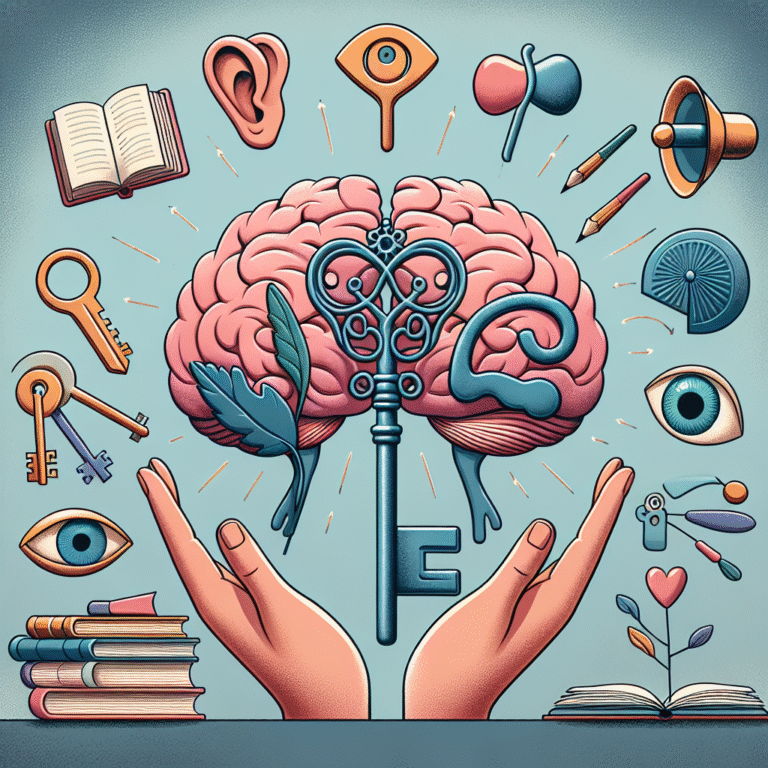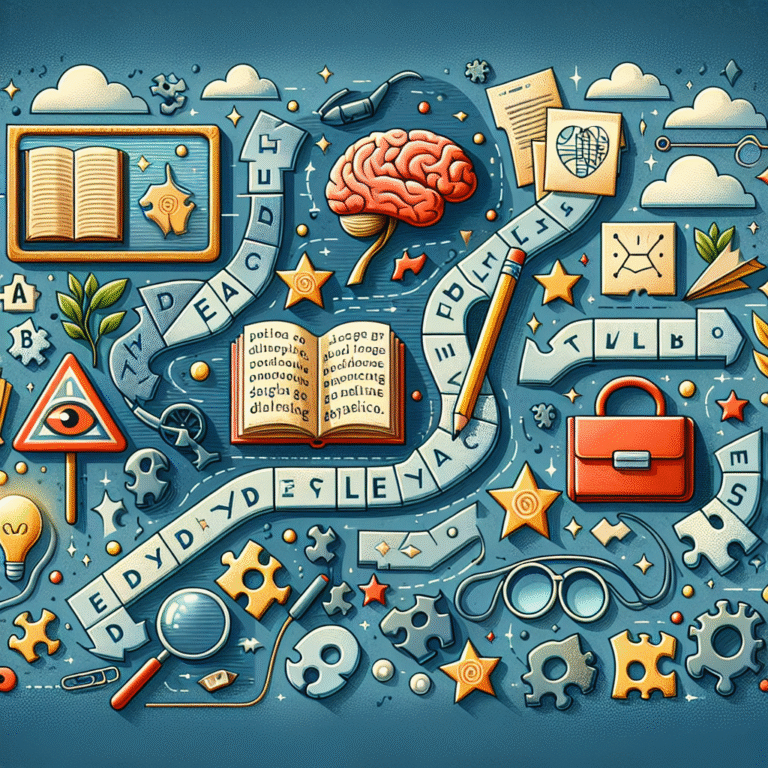
Supporting Success: A Comprehensive Guide to Resources for Parents of Children with Learning Disabilities
Introduction
Every parent dreams of seeing their child thrive, achieve, and blossom into their fullest potential. However, for parents of children with learning disabilities, this dream often comes with unique challenges and obstacles. Supporting Success: A Comprehensive Guide to Resources for Parents of Children with Learning Disabilities serves as a beacon of hope and a toolkit, equipping you with the strategies, insights, and resources necessary to navigate this intricate journey. With an estimated 14% of students in the U.S. receiving special education services, understanding the landscape of support is essential. This guide aims not only to inform but also to inspire parents to advocate for their children’s success while recognizing the strengths that these exceptional individuals possess.
Understanding Learning Disabilities
What Are Learning Disabilities?
Learning disabilities (LDs) are neurological disorders that affect the brain’s ability to process and respond to information. These disabilities can manifest in various ways, including difficulties in reading (dyslexia), writing (dysgraphia), and math (dyscalculia). According to the National Center for Learning Disabilities, learning disabilities are distinguished from intellectual disabilities; children with LDs usually have average or above-average intelligence.
Case Study Example:
The Story of Jake
Jake is an 8-year-old diagnosed with dyslexia. At first, he struggled to read aloud in class and often faced ridicule from peers. With the support of specialized tutoring and an Individualized Education Plan (IEP), Jake has learned to utilize audiobooks and text-to-speech software, leading to a significant increase in his confidence and enjoyment of reading.
Analysis:
Jake’s story illustrates the effectiveness of personalized resources tailored to address specific learning disabilities. Understanding the child’s strengths and weaknesses is crucial in creating an effective support plan.
Common Types of Learning Disabilities
- Dyslexia: Affects reading and language processing.
- Dysgraphia: Involves difficulty in writing, affecting spelling, handwriting, and organizing thoughts on paper.
- Dyscalculia: Impacts a person’s ability to understand numbers and perform math operations.
- Executive Functioning Disorders: Hinder planning, organization, and time management.
Identifying Learning Disabilities
Identifying a learning disability early is crucial for supporting success. Signs include:
- Difficulty following multi-step instructions
- Trouble with reading, writing, or math
- Frequent frustration with academic tasks
Parents can seek assessments from educational psychologists or specialized professionals for accurate diagnosis.
Building a Support Network
Collaborate with Educators
Teachers play a critical role in recognizing and supporting children with learning disabilities. Building a strong partnership with educators can enhance your child’s educational experience.
- Attend IEP Meetings: Collaborate to set realistic goals tailored to your child’s needs.
- Implement Classroom Accommodations: Discuss strategies like extended time on tests or using technology aids.
Join Support Groups
Connecting with other parents facing similar challenges can provide emotional support and practical advice. Local and online support groups can be invaluable resources.
Table 1: Benefits of Joining Parent Support Groups
| Benefit | Description |
|---|---|
| Emotional Support | Share experiences and build a support system. |
| Resource Sharing | Exchange information on therapies, schools, and specialists. |
| Advocacy Training | Learn to effectively advocate for your child’s needs. |
| Networking | Connect with professionals who can guide you. |
Utilize Professional Services
Engaging professionals such as psychologists, speech therapists, and occupational therapists is essential. These specialists can provide targeted intervention strategies.
Case Study Example:
The Journey of Amelia
Amelia struggled not only with dyslexia but also with anxiety during reading activities. By working with a speech therapist who utilized engaging, interactive reading strategies, she began to make substantial progress in her reading fluency and comprehension.
Analysis:
The success of Amelia emphasizes the importance of targeted interventions by trained professionals, highlighting how specific strategies can address both cognitive and emotional challenges.
Educational Resources
Individualized Education Plans (IEPs)
An IEP is a legally binding document that outlines educational goals and services for your child. It’s essential to:
- Understand your rights
- Ensure active participation in IEP meetings
- Regularly review and adjust goals
504 Plans
If your child does not qualify for special education but still needs accommodations, a 504 Plan may be appropriate. This plan ensures that your child can access the general education curriculum with necessary modifications.
Technology Aids
The integration of technology can enhance learning outcomes. From apps that assist with reading to software that aids in organizational skills, technological tools are vital.
Chart 1: Popular Tech Tools for Learning Disabilities
| Tool | Usage |
|---|---|
| Bookshare | Provides free access to books for students with print disabilities. |
| Ghotit | Spelling and grammar checker for people with dyslexia and dysgraphia. |
| Khan Academy | Offers personalized learning experiences for students across various subjects. |
| Voice Dream Reader | Text-to-speech app for easier comprehension. |
Online Resources
Many organizations offer toolkits and guides that are freely accessible. Websites like Understood.org and NCLD.org provide extensive resources for parents navigating learning disabilities.
Advocating for Your Child
Know Your Rights
Being informed about your child’s educational rights is paramount. The Individuals with Disabilities Education Act (IDEA) ensures services are provided and accommodations are made.
Communication Skills
Clear communication with educators and school administrators is crucial. Keep records of all meetings and communications to ensure a well-documented history of your child’s educational journey.
Community Advocacy
Engage with local advocacy groups that focus on education rights for children with disabilities. They can provide resources, legal support, and advocacy training.
Case Study Example:
The Advocacy of Lisa
When Lisa realized her son was being denied extra time on tests, she approached his school board prepared with documentation of his IEP. After presenting her case, the school revised their policy, leading to an improved learning environment for all students with learning disabilities.
Analysis:
Lisa’s story exemplifies the impact of informed advocacy. Her success showcases how one determined parent can create broader change within the educational system.
Conclusion
Supporting a child with learning disabilities requires a multi-faceted approach encompassing collaboration, advocacy, and resource utilization. Supporting Success: A Comprehensive Guide to Resources for Parents of Children with Learning Disabilities equips you with the knowledge and tools necessary to nurture your child’s growth and development. By recognizing their unique abilities, engaging with educators, and advocating for their needs, you can pave the way for your child’s success.
Remember, each challenge faced is a step toward resilience and achievement. As a parent, your advocacy and support are invaluable; armed with the right resources, you can become a powerful ally in your child’s educational journey.
FAQs
1. What are the first steps I should take if I suspect my child has a learning disability?
Begin by observing your child’s behavior and academic performance. Reach out to their teacher for insights and consider professional evaluation by a psychologist or educational specialist.
2. What is the difference between an IEP and a 504 Plan?
An IEP provides specific educational goals and special education services while a 504 Plan allows for accommodations in a general education setting without necessarily qualifying for special education.
3. How can I best communicate with my child’s teachers?
Regular meetings, emails, and open discussions about your child’s growth and difficulties can foster a collaborative relationship with teachers.
4. Are there financial resources available for special education needs?
Various organizations provide grants, scholarships, and reimbursement programs. Local advocacy groups can guide you in finding these resources.
5. What role does technology play in supporting students with learning disabilities?
Technology can offer tools such as text-to-speech, organizational apps, and educational software, all of which can make learning more accessible and engaging.
6. How can I support my child’s self-esteem?
Encouragement, positive reinforcement, and celebrating small achievements can help promote a healthy self-image in children with learning disabilities. Focus on their strengths and provide opportunities for success in various areas.
This comprehensive guide embodies insights intended to empower parents with the knowledge and resources necessary for their children’s success. Embrace the journey, for every challenge conquered paves the way for remarkable achievements.






